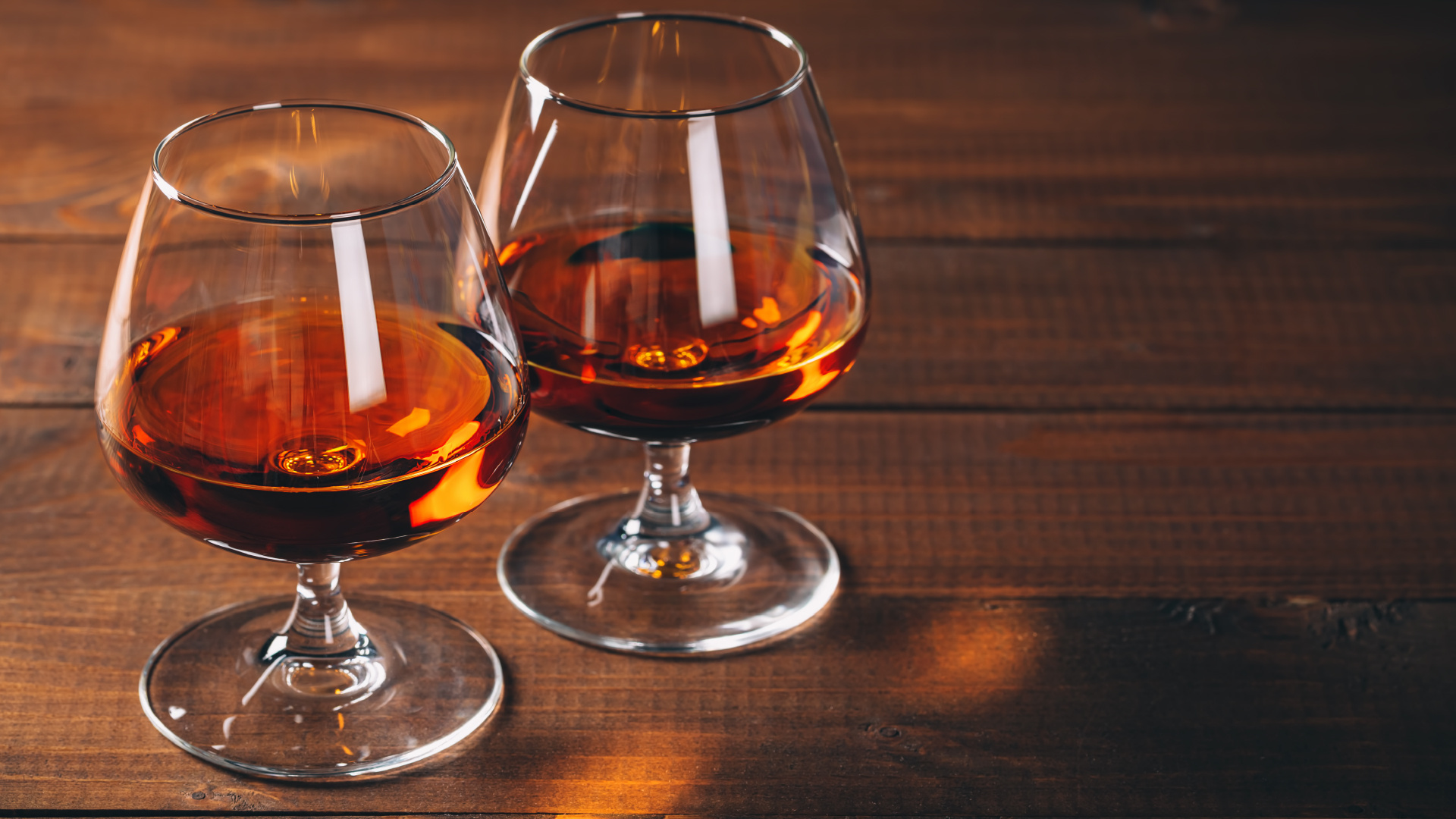Brandy (Alcohol)
Brandy (Alcohol)

Brandy is a type of liquor that is produced by distilling wine. It typically contains 35–60% alcohol by volume (70–120 US proof) and is often enjoyed as an after-dinner digestif. The production process involves distillation, aging in wooden casks for certain varieties, and sometimes coloring with caramel to simulate the effects of aging.
The most famous types of brandy come from France, particularly the regions of Cognac and Armagnac in the south-western part of the country. Cognac and Armagnac have earned worldwide recognition for their quality and distinct flavors.
In addition to wine-based brandies like Cognac and Armagnac, there are also other types of brandies made from different fruits or pomace, which is the solid remains of grapes after pressing for juice. These fruit-based brandies are known as eau de vie in French, which translates to "water of life."
Overall, brandy encompasses a wide range of spirits, each with its own unique characteristics and production methods, making it a diverse and intriguing category in the world of liquor.
The origins of brandy are closely tied to the development of distillation, a process that was known in classical times but not widely used for beverage production until the 15th century. Initially, wine was distilled primarily as a method of preservation and to facilitate transportation by reducing its volume. However, it was soon discovered that the distilled product, known as brandy, improved in flavor when stored in wooden casks.
Brandy played a significant role in historical trade routes, particularly during the 16th century, when French brandy became a key commodity in the cross-Atlantic triangle trade. It replaced Portuguese fortified wine due to its higher alcohol content and ease of shipping. Brandies were often used as payment for workers involved in trade activities, such as canoemen and guards on the African side of the triangle trade.
The distillation process not only removed water from the wine but also led to the formation and decomposition of various aromatic compounds, resulting in a distinct flavor profile for the distilled spirit. Over time, advancements in distillation techniques simplified the process, leading to the creation of a single-distilled product known as brandy.
Most brandies have historically been distilled from grapes, which has led to regions producing excellent brandies being closely associated with grape-growing areas. In the late 19th century, French and Spanish brandies dominated western European markets, while brandies from the Black Sea region, including Bulgaria, the Crimea, Georgia, and Armenia, were prominent in eastern Europe.
One notable brandy brand, Ararat, was established in Yerevan, Armenia, in 1877. It gained international recognition, with Winston Churchill being particularly impressed by the Armenian brandy Dvin, which he received from Joseph Stalin during the Yalta Conference. This led Churchill to request regular shipments of Dvin, with reportedly 400 bottles being sent to him annually.
Another significant brandy factory was founded by David Sarajishvili in Tbilisi, Georgia, in 1884. Tbilisi was a strategic crossroads for trade routes in the region, contributing to the success of the brandy industry in the area.
Overall, the history of brandy reflects its evolution from a method of preservation to a cherished spirit with a rich cultural and trade legacy.
Brandy production and consumption often have a regional character, leading to significant variations in production methods. Wine brandy, which is made from a variety of grape cultivars, utilizes a special selection of grapes to achieve distinct aromas and flavors in high-quality brandies. Cheaper brandies, on the other hand, may be made from whatever wine is readily available.
The process begins with base wine, which differs significantly from regular table wines. Base wine is typically made from early grapes to achieve higher acid concentration and lower sugar levels. It contains smaller amounts of sulfur compared to regular wines to avoid the formation of undesired compounds during distillation. The yeast sediment produced during fermentation may be retained in the wine, depending on the desired brandy style.
Brandy is distilled from the base wine in two phases. Firstly, water and solids are removed to obtain "low wine," a concentrated wine with about 28–30% alcohol by volume (ABV). In the second stage, low wine is further distilled into brandy. The distillation process yields three phases: the "heads," "heart," and "tails." The heads, containing high alcohol concentrations and unpleasant odors, are discarded along with the tails. The heart fraction, rich in aromas and flavors, is preserved for maturation.
Distillation not only increases alcohol content but also triggers chemical reactions that lead to the formation of new volatile aroma components and changes in relative amounts of existing components. Copper pot stills are commonly used for batch distillation, while column stills can be employed for continuous distillation. Batch distillation typically results in brandies with richer aromas, while column stills produce higher alcohol concentration distillates that are less aromatic. The choice of apparatus depends on the desired style of brandy, with examples including Cognac and South African brandy produced in pot stills, and many American brandies using column stills for fractional distillation.
References
- Brandy at the Encyclopædia Britannica
- ^ "Brandy". BBC. Retrieved 22 July 2014.
- ^ Kirk-Othmer Food and Feed Technology. John Wiley & Sons. 14 December 2007. p. 151. ISBN 9780470174487.
- ^ British Nutrition Foundation's Task Force (2008). Gail Goldberg (ed.). Plants: Diet and Health. John Wiley & Sons. p. 174. ISBN 9781405147729.
- ^ Nicholas Faith (2013). Cognac: The story of the world's greatest brandy. Infinite Ideas. ISBN 9781906821791.
- ^ L. M. Cullen (2002). The Brandy Trade Under the Ancien Régime. Cambridge University Press. ISBN 9780521890984.
- ^ Standage, Tom (2006). A History of the World in 6 Glasses. New York, New York: Walker Publishing Company. ISBN 9780802715524.
- a b This article incorporates text from a publication now in the public domain: Chambers, Ephraim, ed. (1728). "Brandy". Cyclopædia, or an Universal Dictionary of Arts and Sciences (1st ed.). James and John Knapton, et al.



![[LIVE] Engage2Earn: auspol follower rush](https://cdn.bulbapp.io/frontend/images/c1a761de-5ce9-4e9b-b5b3-dc009e60bfa8/1)





















































